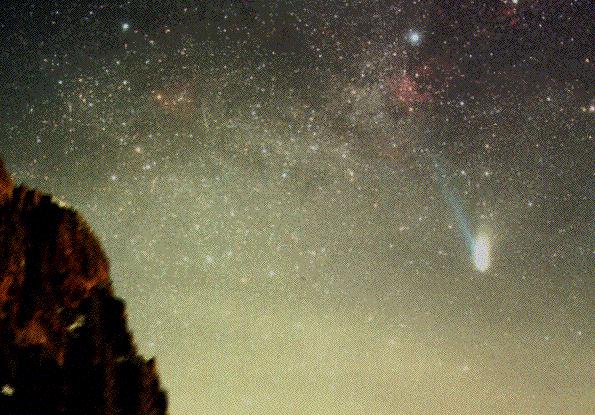
|
Credit & Copyright: P. Cusinato, A. Dimai & M. Pachner (Col Druscie Obs.),
AAC
Explanation:
The Great
Comet of 1997
is now brighter than the Great Comet of 1996
ever was. In fact, it is brighter than almost every star in the
sky. Yet Comet Hale-Bopp
is still about
two weeks away from maximum light.
Comet Hale-Bopp is now well north of the plane of the Earth's
orbit and on the same side of the sky as the Sun.
Therefore, Comet Hale-Bopp
is visible
from Earth's Northern Hemisphere
both just after sunset and just before sunrise. The above picture
of Comet Hale-Bopp
was taken last week in Italy. Many Milky Way stars
and nebulae are visible. To the left is a rock face partly illuminated
by artificial light. Tomorrow's picture: Comet Hale-Bopp's DevelopingTails
|
January February March April May June July August September October November December |
| |||||||||||||||||||||||||||||||||||||||||||||||||||||||
NASA Web Site Statements, Warnings, and Disclaimers
NASA Official: Jay Norris. Specific rights apply.
A service of: LHEA at NASA / GSFC
& Michigan Tech. U.
Based on Astronomy Picture
Of the Day
Publications with keywords: Comet Hale-Bopp
Publications with words: Comet Hale-Bopp
See also:
